Essential Guide On How To Pass The Amazon Invoice Verification Test
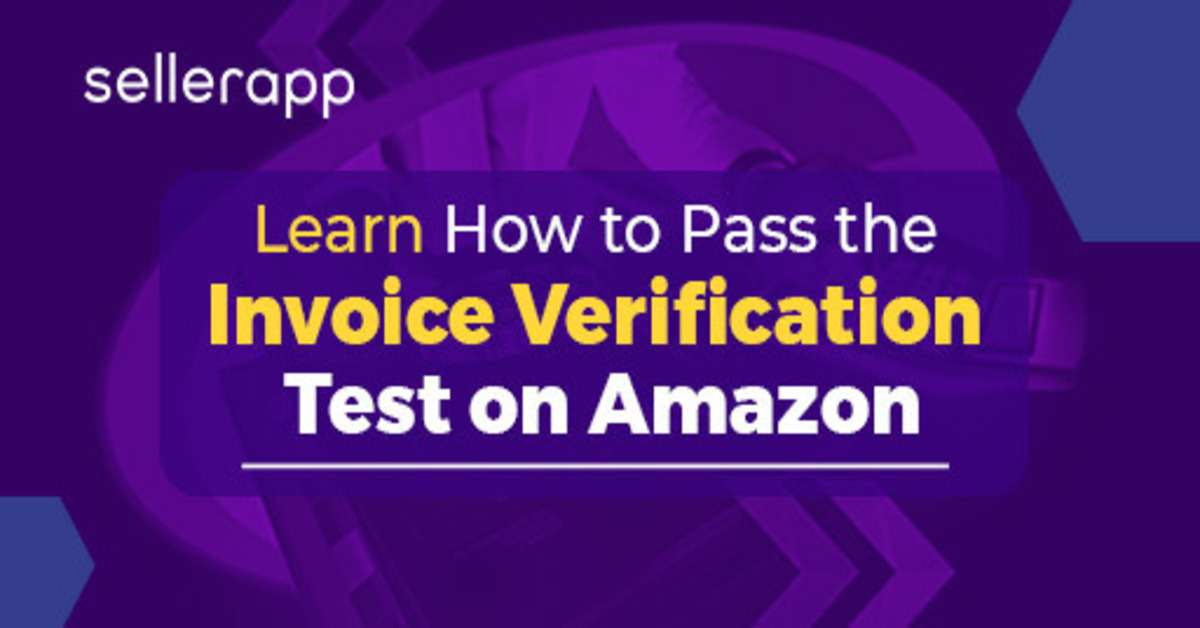
It’s no secret that where there is competition, fraud is never too far behind. And, in the arena of the Amazon marketplace, there’s always the never-ending battle between counterfeit and original products.
This is why Amazon has had to increase its quality control measures in response to an increasing number of complaints. The most significant measure taken by Amazon in this regard has been the introduction of Amazon Invoice Verification.
This process requires sellers to provide invoices for all products they sell, in order to prove that the products are not counterfeit. This system has been met with mixed reactions from sellers.
Some sellers feel that the process is too burdensome and is not worth the hassle. While other sellers feel that it is a necessary step in order to ensure the quality of their products and protect their brand.
Now that you know the motive behind designing such a fool-proof quality investigation strategy by Amazon, it’s time to understand the nitty-gritty details of the Amazon Invoice Verification process and how it works. In this article, you are expected to learn –
- What is the Amazon Invoice Verification Test?
- Why does Amazon ask for an Invoice?
- What happens if I don’t have any Invoices to send to Amazon?
- How to ensure that my Invoice will be Accepted?
- What happens if I have no invoice?
- What happens if I fake an Invoice?
- How to avoid Invoice Verification Requests?
- Final Thoughts
What is the Amazon Invoice Verification Test?
The Amazon Invoice Verification process is in place to guarantee the authenticity, quality, and condition of products being sold on the marketplace. This process is in response to complaints from customers about products not meeting their expectations. This smart technique of verifying the supplier invoices of sellers has proven to be a very beneficial step in preventing the selling of fake products.
The aim of the Amazon Invoice Verification process is to ensure that product purchased by Amazon shoppers is new, safe to use, original, and procured from an authentic supplier.
Amazon also takes the responsibility to make sure that the invoices are scrutinized and verified well, to avoid any errors. They also call and/or email the suppliers or manufacturers to verify whether the invoice is authentic or not. There are certain criteria set to approve these invoices, and even if genuine, they may not be accepted if these criteria are not fulfilled.
Simplify your Amazon invoice verification process with the convenience of invoicing online, enabling you to efficiently manage and validate your invoices, ensuring accurate financial records and smooth transactions on the Amazon platform
Why does Amazon ask for Invoices?
Invoice requests usually occur when brands or buyers complain about fulfilling inauthentic products by you. However, Amazon may also request invoices when there are:
- There are complaints about product quality
- There are complaints about product authenticity
- If products are used but sold as new
- Products that are not similar to the listing description or image
- Issues related to item safety
Amazon also takes every step to verify the item quality during the seller vetting process. At present, they request invoices and supply chain proof before the product is sold. There have been several instances when Amazon’s algorithms have flagged certain listings for verification upfront.
Although it’s a good move to eliminate counterfeit product deliveries, it can be a nightmare for dropshippers on Amazon, as they won’t have an invoice until they actually sell their item.
What happens if I don’t have any Invoices to send to Amazon?
There are different types of sellers on Amazon – dropshippers, private labels, RA, manufacturers, vendors, etc. And each of them has its own set of selling processes. Therefore, if you do not have an invoice, there is nothing to worry about as SellerApp’s experts have found a way out for you!
Dropshipping
The good news is that you can dropship without providing invoices. In this case, Amazon will not auto-suspend you unless you fail in the registration process. However, there is no denial that dropshipping business on Amazon is a high-risk model, at the same time, highly rewarding.
To know about the pros and cons of dropshipping business, read this in-depth guide
If you are into dropshipping business on Amazon, it’s nothing short of walking on the edge of a knife. The situation may even get as grim as Michael’s pandemonium while firing Luke.

To understand better, read what the Dropshipping policy says. In this model, it’s the Amazon product quality teams who decide on the enforcement policies and proof of authenticity. If you are a dropshipper, you must be able to produce packing slips, invoices, external packaging, and other information included or provided in connection with the products.
However, the major issue with dropshipping is that you won’t possess any supply chain documentation unless an order is fulfilled. Therefore, verification of the quality of the products is not possible before they’re shipped to the customer. Therefore, this model is not the most efficient one for Amazon.
Private Label Sellers (good news)
If you are selling via the private label, you are already in contact with your vendor or manufacturer. Hence, you can easily get your invoice from the supplier person in contact.
To know more about how to sell on Amazon as a Private Label brand, read our detailed guide here.
Arbitrage
Retail arbitrage/ online arbitrage (RA/ OA) sellers only comprise retail receipts to provide to Amazon. And they hardly have any contact with the brand or their suppliers, which could have otherwise helped them to display other documents.
However, retail receipts may not be enough to defy the claims of IP infringement from brands on Amazon. This is why resellers need to be extremely cautious with respect to the quality of products as brands may accuse them of infringement and selling counterfeit products on Amazon.
If I manufacture my own products, how do I provide documentation?
We’ve often come across sellers in this situation who get denied for showing “self-issued” invoices. So what should you do? You have to set up your business in a way that there is a clear difference between you as the manufacturer, and you as the seller. Build a separate entity and invoice your Amazon seller business wisely.
There have been many cases where sellers have been suspended from selling on Amazon as their invoice verification failed. Read this to know more. Hence, the most recommended way of selling on Amazon is to either sell as private label brands or manufacture your own products.
You may also choose to source your products from alibaba.com and receive authentic invoices from them. To do so, log in to SellerApp’s dashboard and navigate to the Amazon Product Sourcing tool and choose from thousands of registered vendors and suppliers from all over the world.
How to ensure that my Invoice will be Accepted?
There are many ways to ensure that your Amazon Invoice is accepted. Let’s look at some of the best ways –
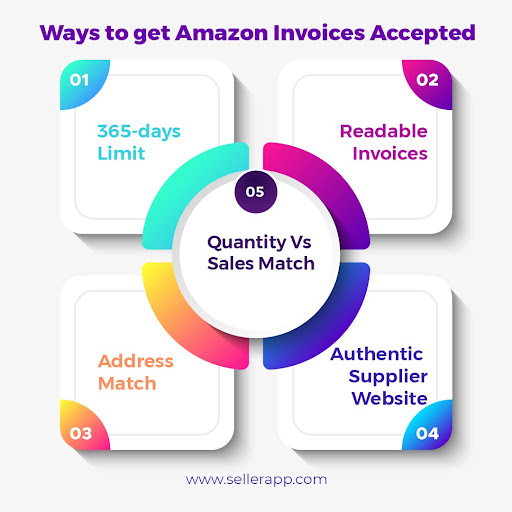
Look for the 365 Days Limit
If you provide an invoice that’s older than 365 days, your invoice will be considered inauthentic. Therefore, you need to ensure that the invoice dates happen to be within the 365 days threshold to get approved.
Provide Readable Invoices
The purpose of your Amazon invoice is to verify the authenticity and condition of the items you are selling. Therefore, providing an invoice that is smudged, or in bad shape will only make it difficult to acquire important data like the date, contact number, etc.
Make Sure Your Invoice Is Not Handwritten
This is a big NO while sending an invoice for approval. Amazon does not accept handwritten invoices. In this case, you need to request your supplier for a printed or digital invoice.
Does the Supplier have a Website?
It improves the credibility of your Amazon Invoice if your supplier has an authentic website linked. This is because it helps, the Quality Control team at Amazon to easily track the details for verification.
Ensure a Proper Website
It is not enough to merely have a supplier website. It should be in a proper functioning state for them to get accepted and pass the Amazon Invoice Verification test.
The team at Amazon checks all the information available to verify the suppliers. Therefore, ending up on a generic page, or finding no online presence will only delay the verification process or even lead to failing the verification test. Therefore, to avoid Amazon seller suspension, procure products from only those suppliers who have an authentic website.
Address Match
There are two things to keep in mind in this situation. Ensure that the address on the invoice matches the one you have added on Seller Central.
Secondly, the address given on the invoice must also be the same as the address the suppliers have mentioned on their website.
If these criteria don’t meet, Amazon has every right to reject your invoice.
Examine Quantities Vs Sales
Your invoice may get rejected if the number of sales is greater than the products listed on your invoice, thereby, rejecting any new product listing.
Invalid Amazon invoices are those that do not meet any of the above criteria. Even if they are not fake, these few things need to be in place to ensure that your invoice does not get rejected.
What happens if I have no invoice?
If you do not have an Amazon Invoice –
- It may require you to provide documentation to Amazon whenever they ask for it. It may also lead to access being denied to the ASINs that you have listed.
- This may be an issue for drop-shippers when an invoice is needed before making its first sale. Therefore, they may contact Amazon Seller Support for the same and request to provide invoices and supply chain documentation after fulfilling their orders.
- If you are a private label, it is comparatively easier for you to provide the documentation. However, this does not exempt you from showing the invoice.
What happens if I fake an Amazon Invoice?
If you edit or create your own Invoice:
- Amazon will contact you regarding the forged invoices and this may lead to seller suspension. It’s important to note that Amazon has a team of trained professionals who can easily identify fake or manipulated invoices/documents.
- If you have previously faked invoices that you are still using for new sales, you need to remove those immediately as it can lead to your account suspension at any moment due to fabricated documents.
- Forging Amazon Invoices is equivalent to deceiving your shoppers and breaching their trust. Therefore, this is considered a serious offense by Amazon.
How to avoid Invoice Verification Requests?
Amazon Invoice Verification requests are not that hard to avoid. The most effective way to prevent invoice verification requests is to avoid situations that require them in the first place. Now, this comes with a significant caveat. Customer complaints cannot be avoidable – but there are certain things you can control.
Let’s focus on the factors in your hands.
- Do not present your listings falsely in the listing content or images that would prompt a customer to complain to Amazon about the inaccuracy of the products.
- Ensure that your product packaging is sufficient enough to withstand the journey to the customer. A lot of customer complaints (that often cause ASIN suspension) are “used sold as new” claims made by shoppers. Usually, this complaint is not even because of the misleading sale of a used item, but due to poor packaging. This causes the product in transit to get damaged and buyers consider it a used product.
- Be prepared with your customer query replies. If you are requesting an honest customer review, make sure to include that you are available 24/7 to solve any queries regarding the product. Keep monitoring your Q&A section every day to solve customer queries quickly and be in the good books of Amazon.
Final Thoughts
As an Amazon seller, always remain proactive.
Getting rejected in an Amazon invoice verification is an unnecessary risk that’s completely avoidable. There is no point to walk on the edge of a knife and get your account banned. Rather, make sure to take all the aforementioned steps and seal any chances of getting your account suspended due to Amazon Invoice Verification failure.
Contact your supplier and request an invoice now, even when you aren’t requested by Amazon to show the documents. Ride out any difficulties that may arise in the future due to the invalid or unavailability of item invoices. An appropriate invoice at like health insurance – you’d rather possess it and not require it than require it and not possess it.


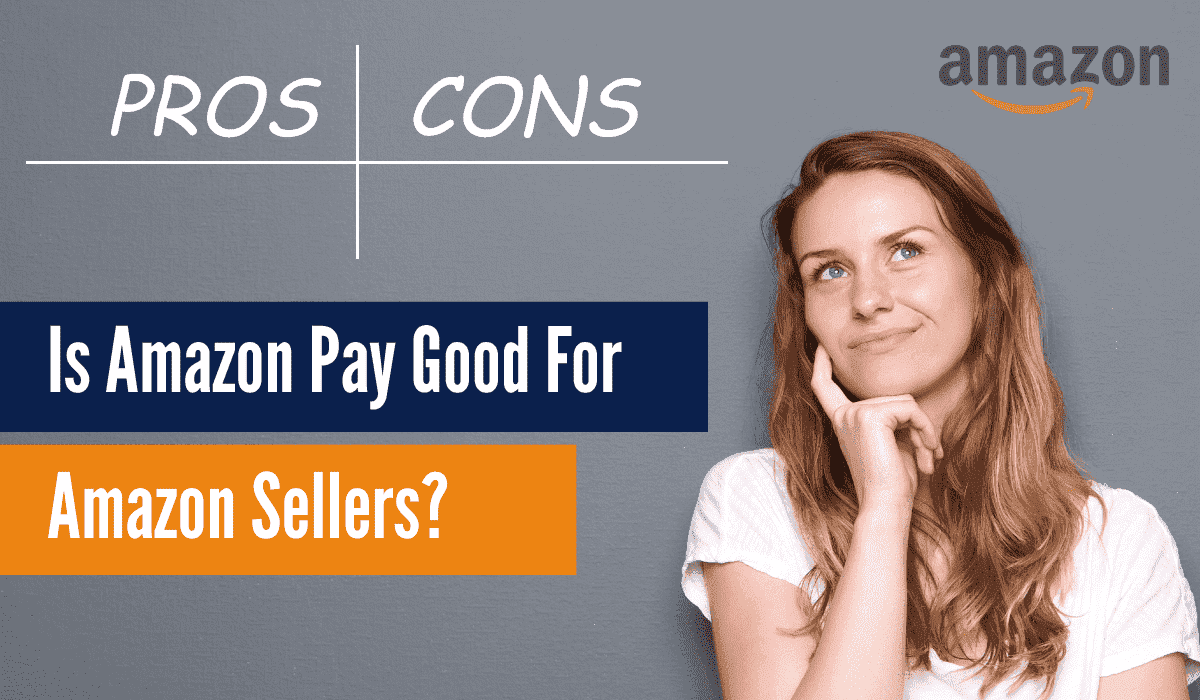
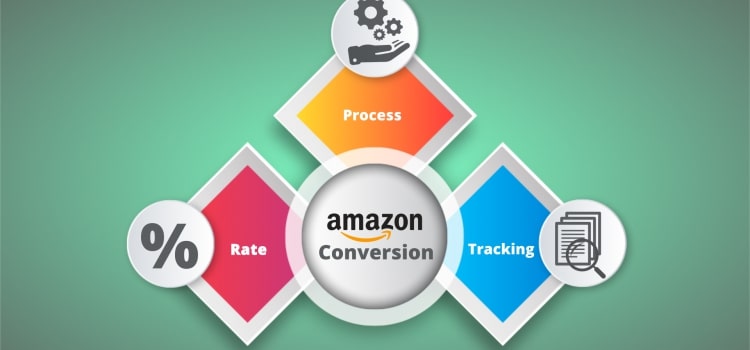


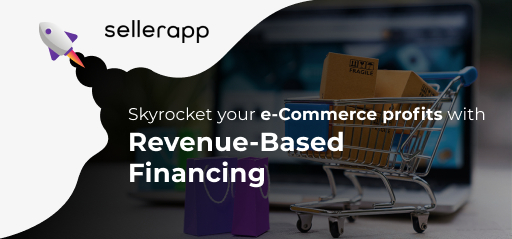


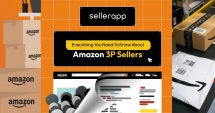
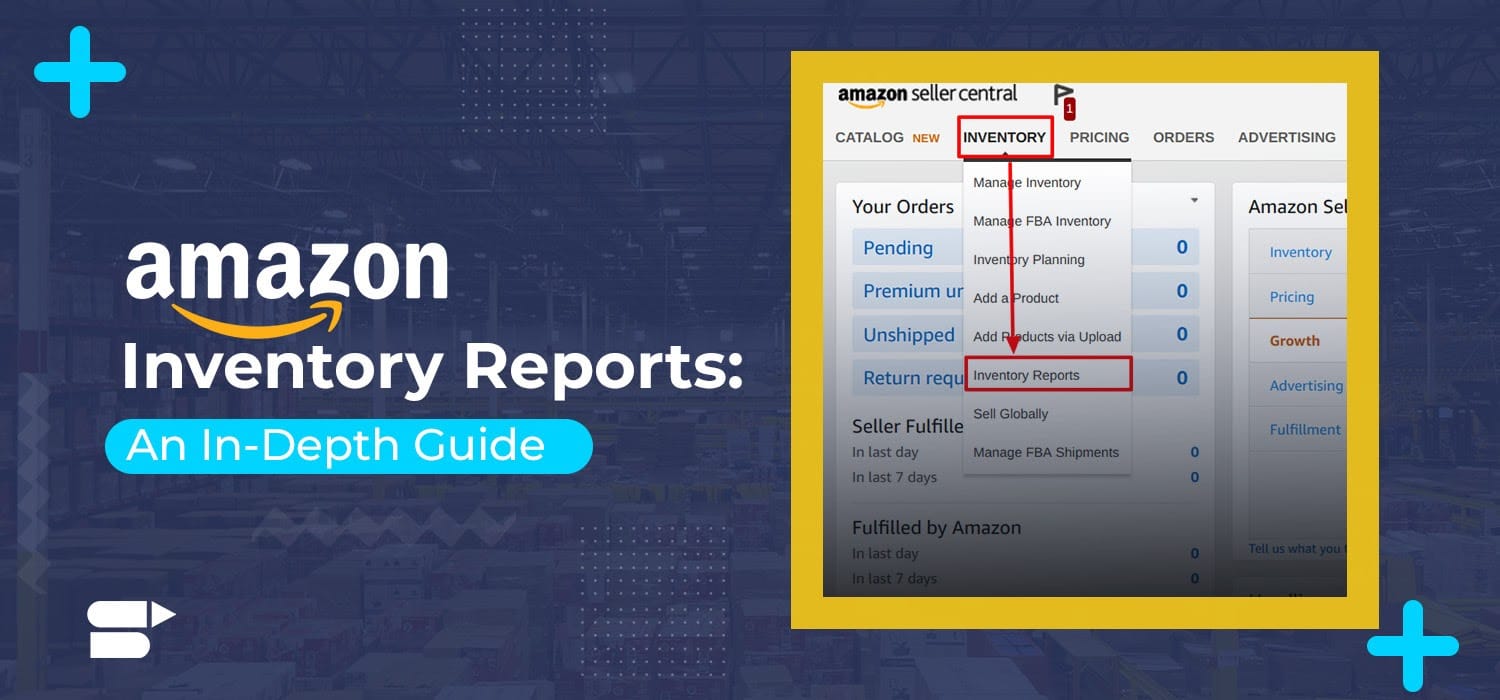
Sam Billings
December 16, 2024This article makes invoice verification seem less intimidating. Proactive steps definitely help sellers stay compliant!
Liam Davis
December 19, 2024Amazon’s strict policies can be a headache, but they truly ensure better quality control for customers.
Paul Walker
December 23, 2024This guide breaks down Amazon’s invoice verification process so well—especially useful for new sellers. Great insights!